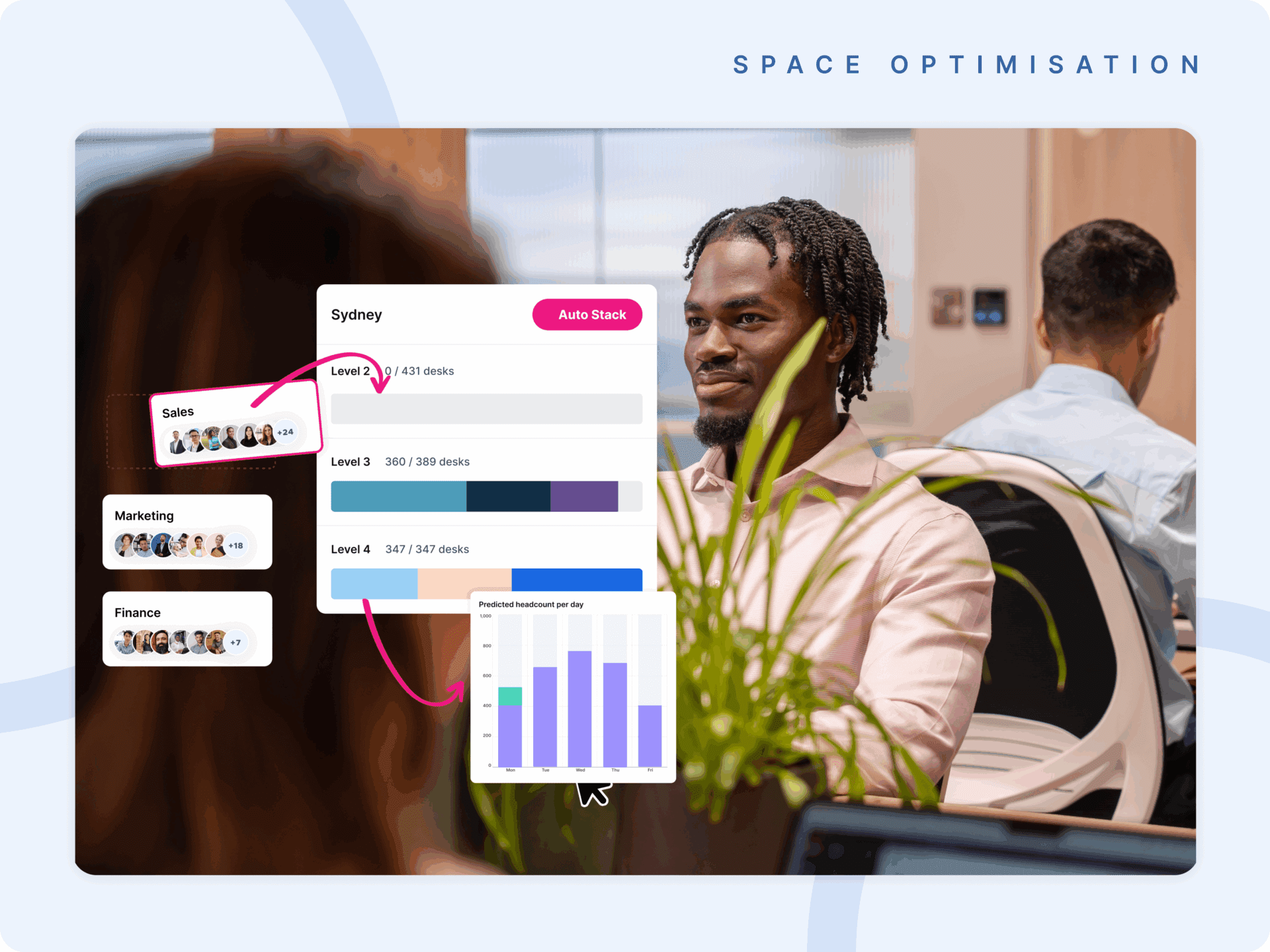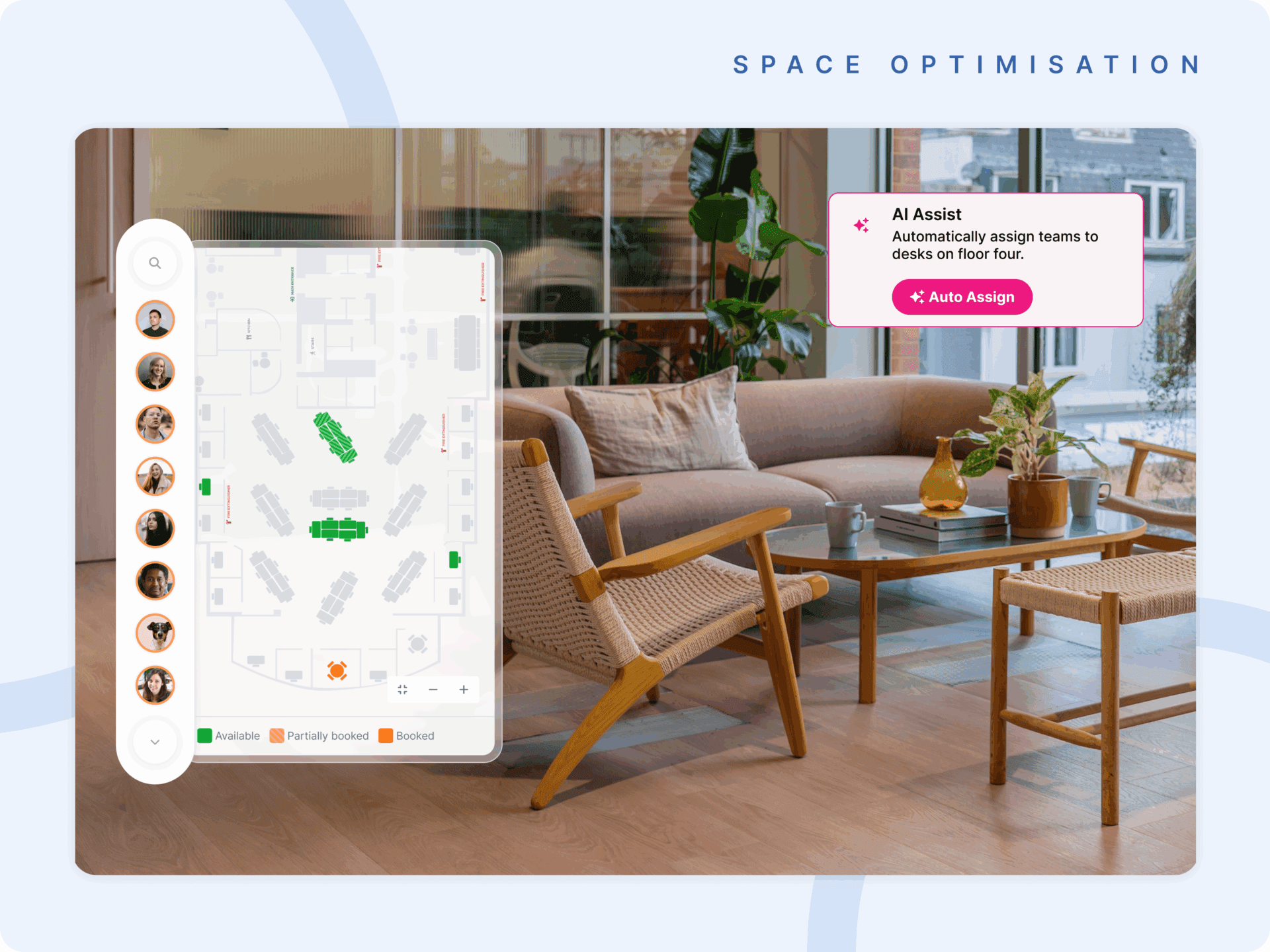Managing office space used to be a static exercise. Teams were assigned to floors, departments were clustered by function, and any changes meant redrawing plans from scratch. But in 2025, the pace of organizational change has made that model obsolete.
Hybrid work, mergers, and rapid team restructuring mean floor plans must evolve continuously. Leaders need a way to visualize, test, and optimize layouts across multiple buildings and floors — without weeks of manual coordination.
That is where stack planning comes in.
What Stack Planning Means
Stack planning is the process of visually organizing teams, departments, and functions across floors, buildings, or even entire portfolios. It gives workplace and real estate leaders a single, dynamic view of how their organization is distributed — and how that distribution can change.
A stack plan acts as a living map of the workplace. It shows where people sit, how much space each department uses, and where opportunities exist to consolidate or grow.
Stack planning helps leaders answer key questions:
- Which teams are spread too thin across locations?
- What happens to space needs if we grow or merge departments?
- Can we free up an entire floor by rebalancing capacity?
By visualizing people, teams, and space together, stack planning turns complexity into clarity.
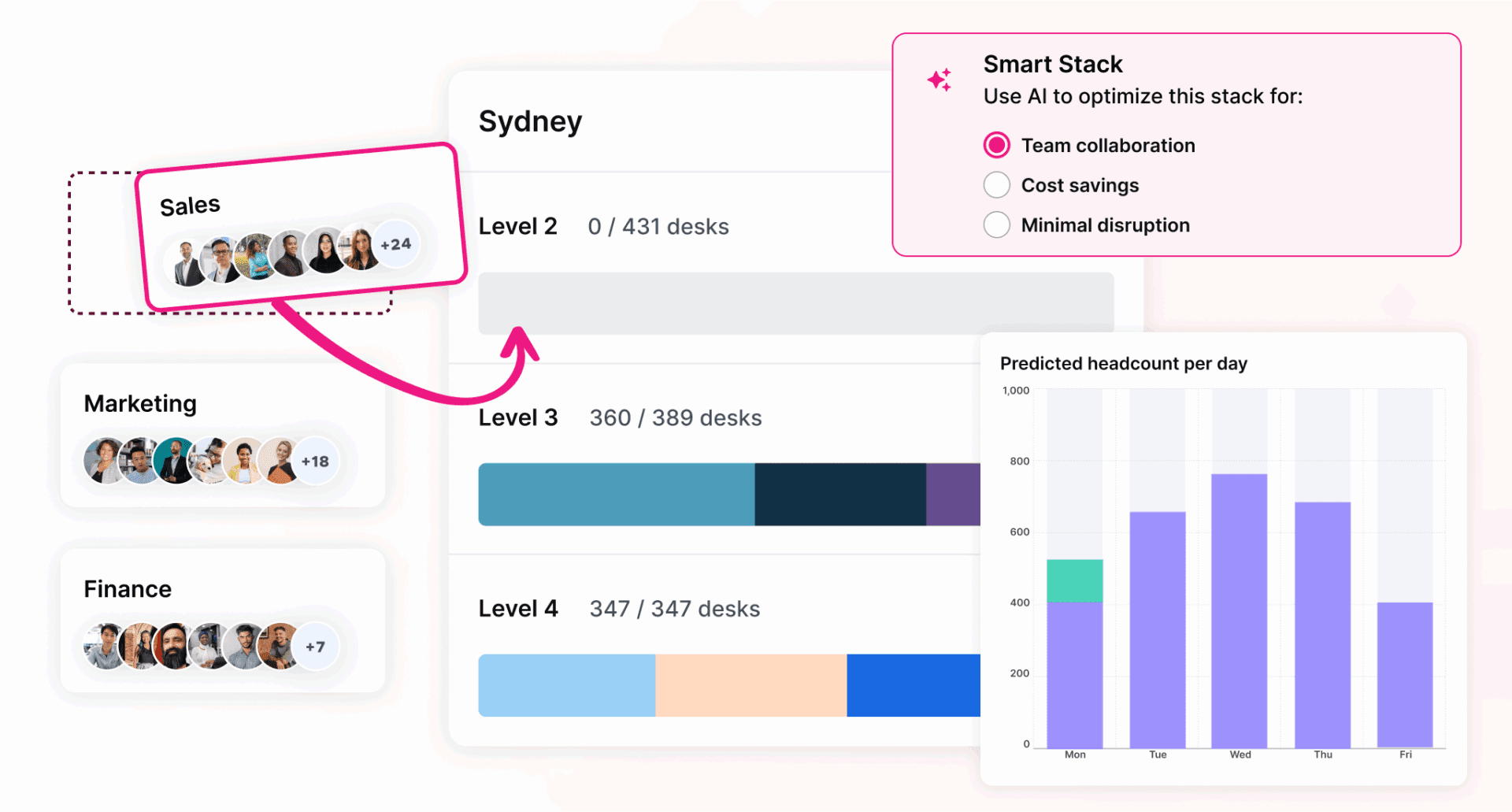
Why Stack Planning Matters In 2025
Kadence data shows that average office utilization still hovers between 20 and 40 percent. That means most organizations have significant flexibility within their existing footprint — if they know how to use it.
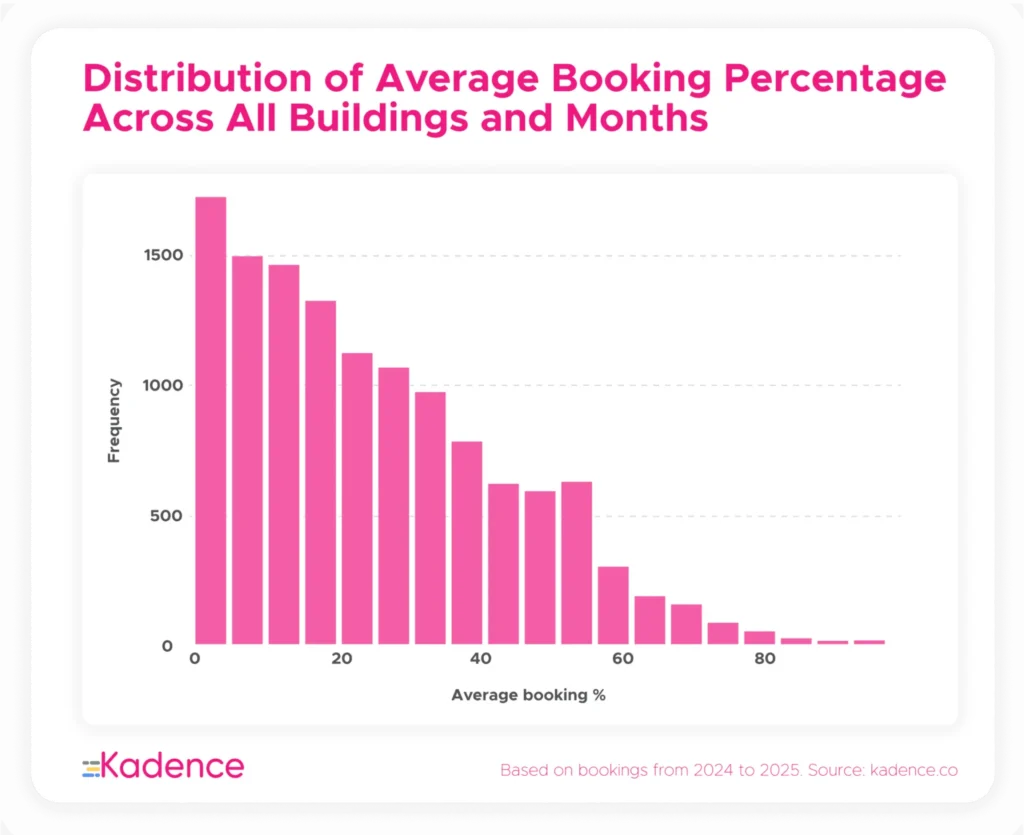
Traditional IWMS tools capture static snapshots of space. But today’s hybrid environment requires continuous optimization. Space must respond to dynamic headcount, changing schedules, and evolving collaboration needs.
Stack planning bridges the gap between data and design. It allows organizations to see how their space strategy aligns with real behavior, policy, and cost. For CFOs and Workplace leaders, this visibility is essential to making financially defensible decisions.
The Components Of Stack Planning
Effective stack planning combines three elements:
- Visualization. A digital map showing departments, teams, and their spatial relationships.
- Data Integration. Real-time connection to occupancy, headcount, and policy data.
- Scenario Testing. The ability to model changes — growth, reorganization, or consolidation — and see the impact instantly.
Together, these capabilities help organizations plan not just for today’s layout but for tomorrow’s possibilities.
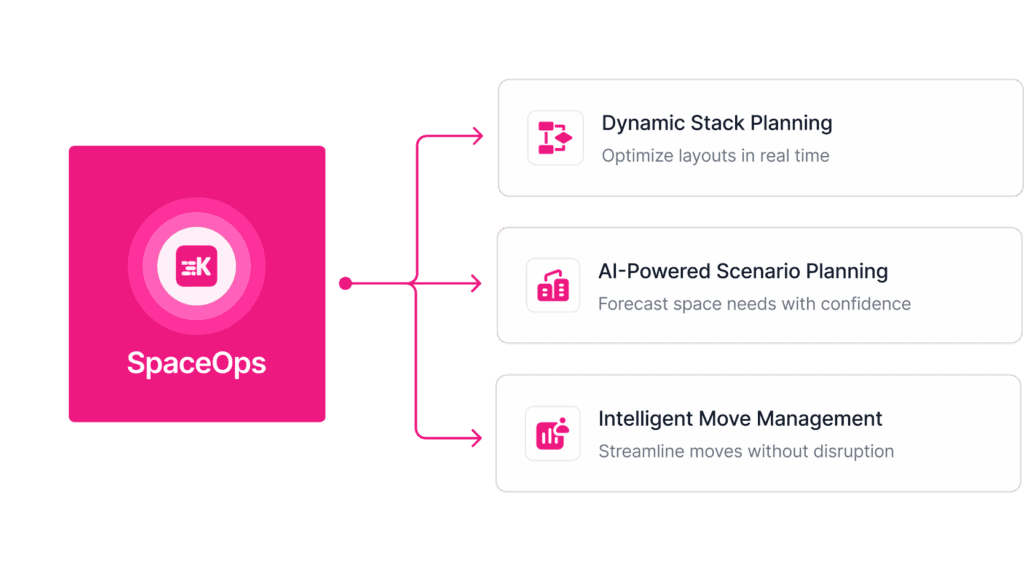
The Cost Of Static Planning
Many companies still rely on PDFs or CAD drawings that must be manually updated. These formats make it difficult to visualize change, leading to guesswork in high-stakes decisions.
When a business grows, merges, or reorganizes, manual stack plans quickly become outdated. Space becomes fragmented, departments lose adjacency, and inefficiencies multiply.
Without live visualization, it is nearly impossible to know which areas are underused or how moves will affect collaboration. As a result, organizations risk overpaying for space they do not need or disrupting teams unnecessarily.
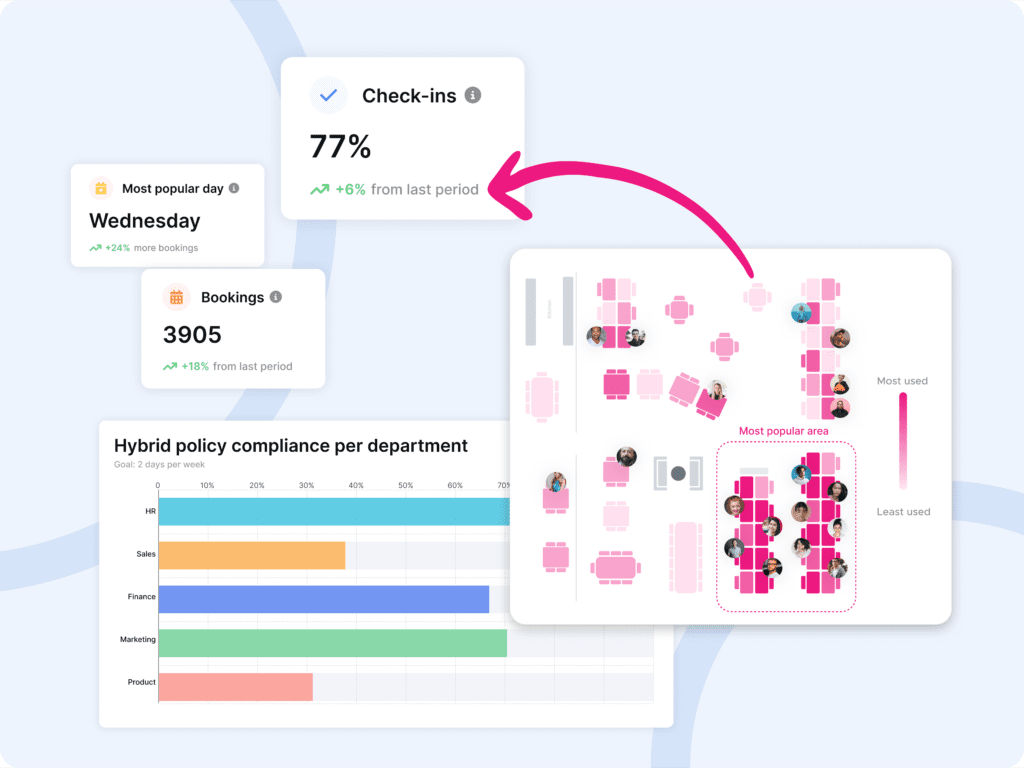
From Static Maps To Live Models
Modern stack planning tools replace static diagrams with interactive models. Leaders can drag and drop teams, test multiple layouts, and instantly see how each change affects cost, capacity, and adjacency.
This kind of flexibility allows for strategic decision-making. For example:
- A global company consolidates two floors into one by rebalancing departments.
- A new product division is seated alongside marketing to encourage cross-functional collaboration.
- A real estate team simulates future growth to ensure expansion can be accommodated without new leases.
These examples show how stack planning transforms reactive management into proactive strategy.
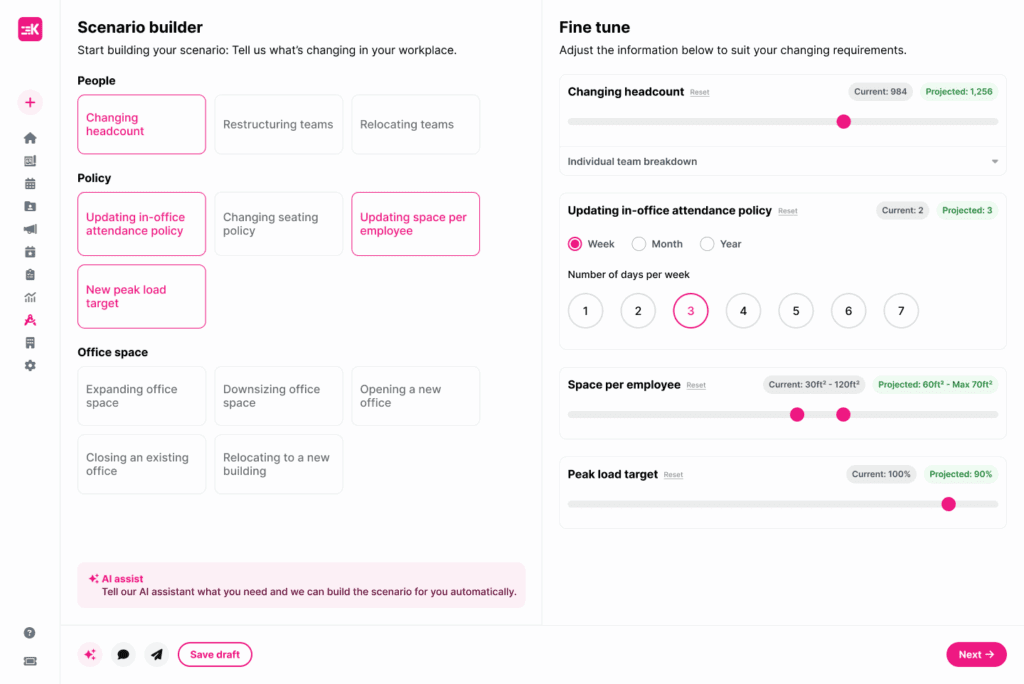
How Kadence SpaceOps Makes Stack Planning Dynamic
Kadence SpaceOps takes stack planning from a visual exercise to an operational capability. It connects live occupancy data, HR information, and AI-driven modeling in a single platform so organizations can plan, test, and implement space decisions seamlessly.
With Dynamic Stack Planning inside SpaceOps, teams can:
- See every department’s footprint across buildings and floors.
- Drag and drop layouts to test new configurations instantly.
- Evaluate cost, capacity, and collaboration outcomes side by side.
- Align stack plans with headcount forecasts and hybrid attendance data.
Once a configuration is approved, SpaceOps connects directly to move management workflows, so changes transition smoothly from plan to execution.
The result is complete spatial intelligence — from visualization to implementation — built for modern enterprises.
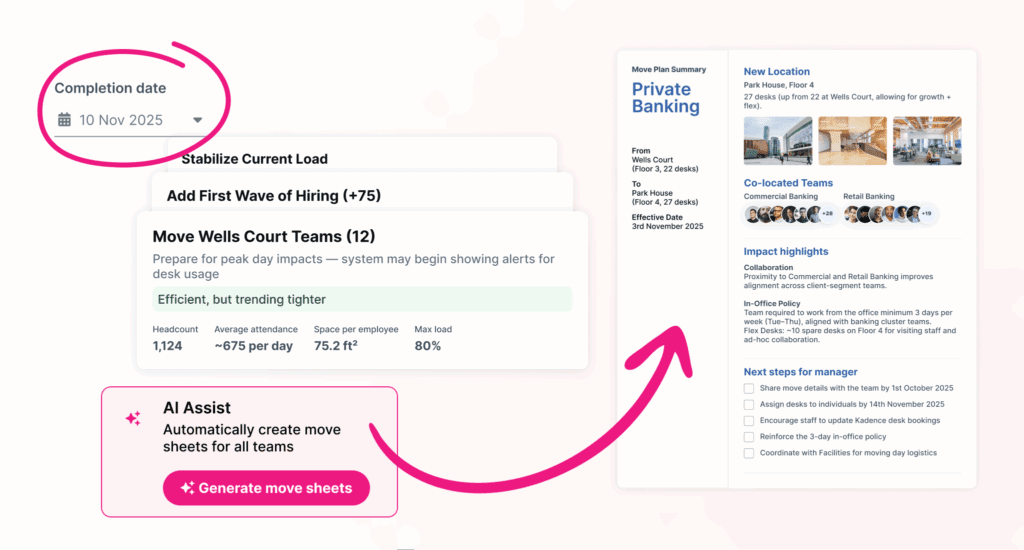
Why Stack Planning Creates Strategic Advantage
Stack planning does more than optimize space. It builds alignment between the physical and organizational structure of a business.
For CFOs, it provides visibility into how every square foot contributes to cost efficiency.
For Workplace leaders, it ensures teams stay connected and productive across changing layouts.
For HR, it offers a foundation for designing spaces that reflect company culture and collaboration goals.
When paired with data, stack planning becomes a strategic lever for portfolio optimization, cost reduction, and employee engagement.
For further insight, explore CBRE’s research on dynamic workplace planning and real estate strategy.

Frequently Asked Questions
1. What is the purpose of stack planning?
Stack planning helps organizations visualize how teams are distributed across their space and optimize layouts to improve efficiency, collaboration, and cost management.
2. How often should stack plans be updated?
Stack plans should be reviewed whenever headcount, policies, or business priorities shift. With digital tools, this can happen continuously rather than once per quarter.
3. What is the difference between stack planning and move management?
Stack planning visualizes and models layouts before changes occur. Move management executes those changes by coordinating people, assets, and workflows.
4. How does Kadence SpaceOps improve stack planning?
SpaceOps combines live occupancy data, AI modeling, and interactive visualization so organizations can design, test, and implement stack changes in one unified platform.
Final Thought
Stack planning has evolved from a static visualization tool into a live operational system. In a world where workplace dynamics shift constantly, organizations need a way to see their entire portfolio and act with precision.
Kadence SpaceOps gives leaders the power to plan and execute smarter — optimizing space for cost, performance, and collaboration in one connected workflow.
Book a demo with our workplace operations experts to see it in action.


